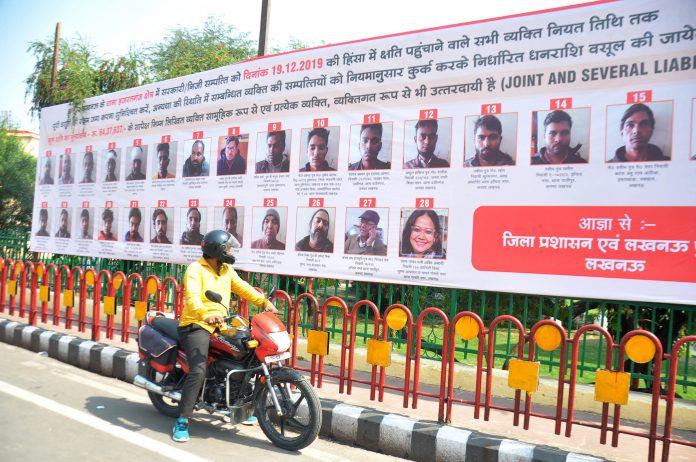
New Delhi: The Allahabad High Court has allowed the withdrawal of pleas challenging Uttar Pradesh’s Name and Shame Ordinance after Senior Counsel Manish Goyal, appearing on behalf of the state government, informed the court that the impugned ordinance has been passed by the Uttar Pradesh Legislative Assembly as an Act on August 22 with some crucial changes. The Act is awaiting approval of Governor Anandiben Patel.
The Division Bench comprising Chief Justice Govind Mathur and Justice Saumitra Dayal Singh has, however, granted liberty to the petitioners to file a fresh plea challenging the newly passed Act.

The Uttar Pradesh Recovery of Damages to Public and Private Properties Bill, 2020 has been passed by the Uttar Pradesh Legislative Assembly, on August 22.
The petitioners are practicing advocates of the High Court, who along with a social activist and a journalist, challenged the Ordinance passed by the UP Government to recover damages from alleged wrongdoers for damaging public and private property. The ordinance also provides for publication of personal details of the alleged wrongdoers.
The petitioners had submitted that the objective of the impugned Ordinance is already covered by the Prevention of Damage to Public Property Act, 1984, and therefore, it is void to the extent of repugnancy as provided under Article 254 of the Constitution.
The Uttar Pradesh Government has proposed the Recovery of Damages to Public and Private Properties Bill, 2020 in March this year after the violent protests against the Citizenship Amendment Act that had led to massive destruction of public and private properties in Lucknow, the UP capital.
Read Also: SC asks Patna HC to consolidate, transfer all Tablighi cases to one court
Prior to promulgation of the ordinance, the UP government had put banners in public places displaying the names, photographs and addresses of persons accused of committing violence during the protests which was subsequently questioned by the High Court on the legality of such actions. Following, the observation made by the High Court, the Government came out with the Ordinance, which has been later on given the shape of a Bill.
– India Legal Bureau

